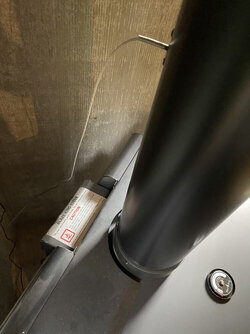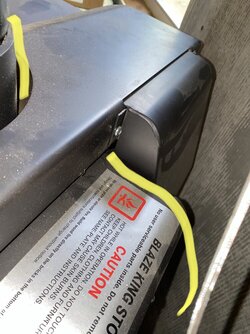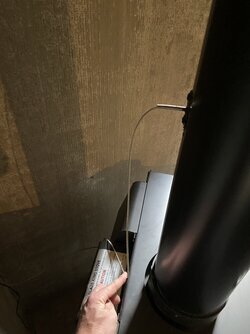I hear ya. I gotta talk my wife into double wall and why we need it. She still doesn’t understand why we needed a new woodstove when the other one still worked. Even though she wasn’t the one getting up in the middle of the night to reload it in the dead of winter. Lol.
As far as clearances right now, I have very close to 18” from the edge of the stove pipe to the drywall. The vertical run. I’ll measure it again when I get home. Even if I switch to double wall pipe the stove is staying where it is.
I know for the most part the pipe clearance is only really an issue in the event of a chimney fire or something similar. The pipe shouldn’t get that hot during normal operation. But it’s still a good reason to have the needed clearance.
A couple winters ago my uncle had a chimney fire. He said he was worried about the stove pipe catching the wall above the stove on fire because the pipe was glowing.
As far as clearances right now, I have very close to 18” from the edge of the stove pipe to the drywall. The vertical run. I’ll measure it again when I get home. Even if I switch to double wall pipe the stove is staying where it is.
I know for the most part the pipe clearance is only really an issue in the event of a chimney fire or something similar. The pipe shouldn’t get that hot during normal operation. But it’s still a good reason to have the needed clearance.
A couple winters ago my uncle had a chimney fire. He said he was worried about the stove pipe catching the wall above the stove on fire because the pipe was glowing.








